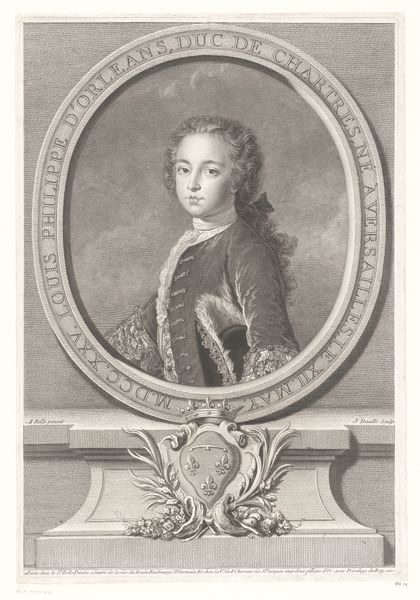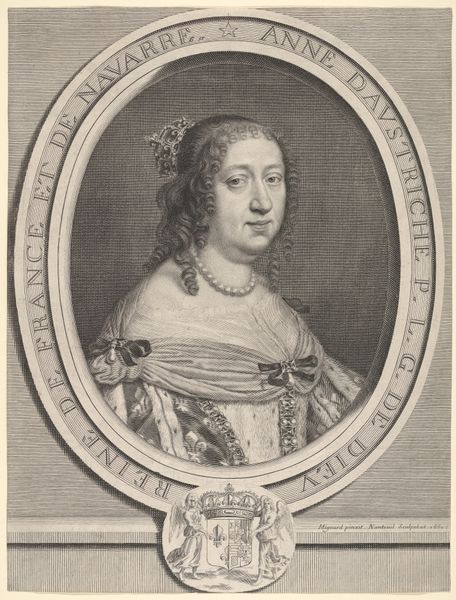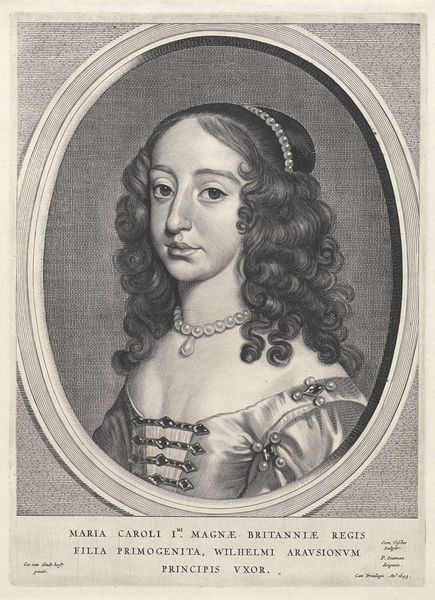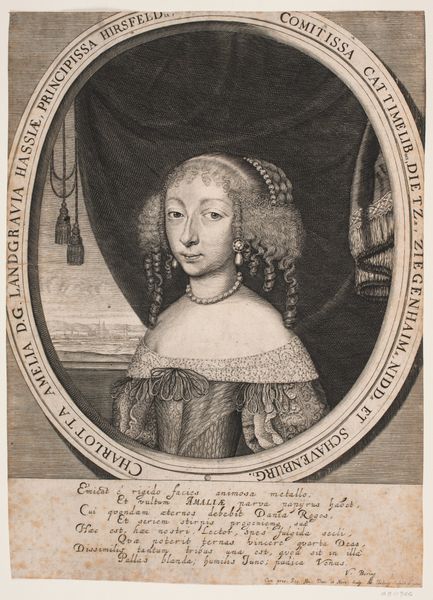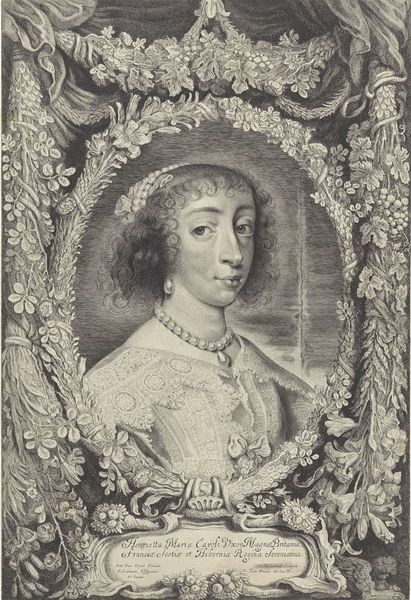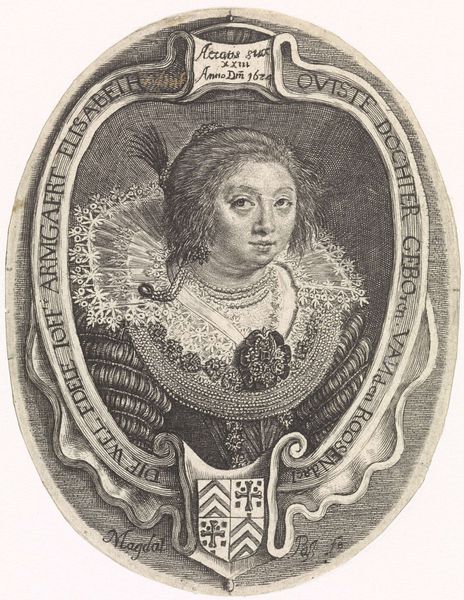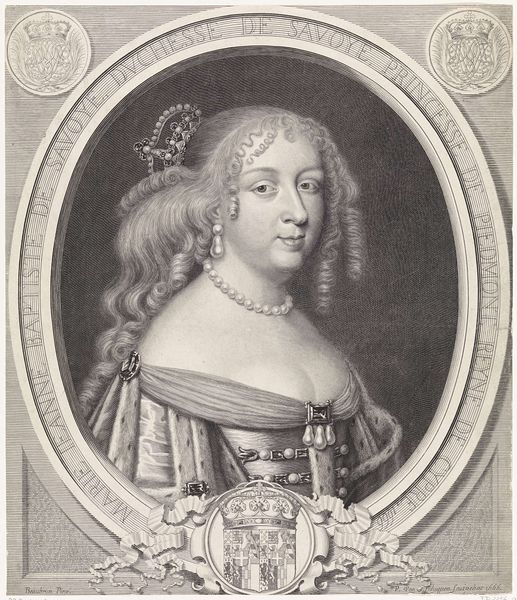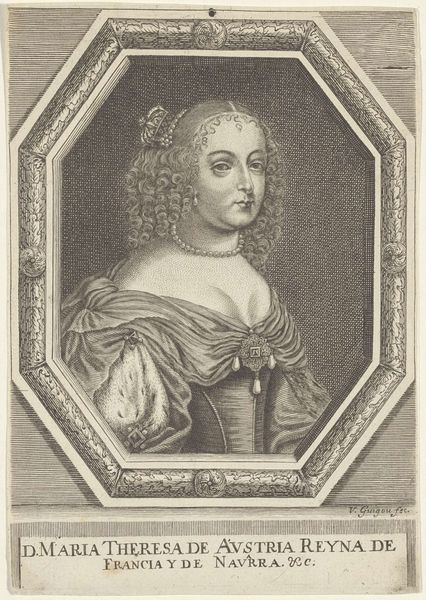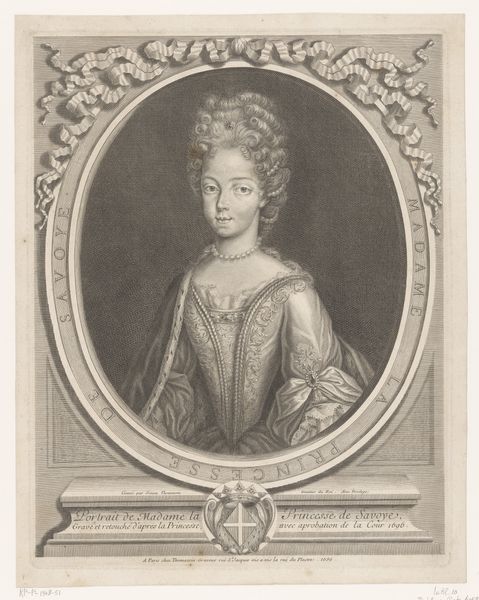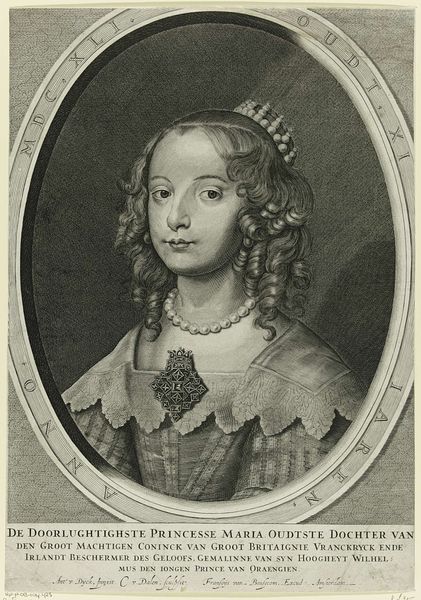
Portret van Maria Henrietta Stuart, prinses van Oranje en echtgenote van Willem II 1643
0:00
0:00
print, engraving
#
portrait
#
baroque
# print
#
old engraving style
#
group-portraits
#
engraving
Dimensions: height 435 mm, width 357 mm
Copyright: Rijks Museum: Open Domain
Curator: Looking at this portrait, what strikes you first? The texture, perhaps? The lines? Editor: The eyes, definitely. There's a certain weariness in them, a sense of predetermination. And of course, the frame itself—overflowing with symbolic details, heraldry and such. It makes you consider what its message might be. Curator: Exactly. This is an engraving from 1643, made by Jonas Suyderhoef, depicting Maria Henrietta Stuart. Her status is clearly announced in the Latin text—a princess, daughter of King Charles, betrothed to William. The portrait speaks volumes about the political climate of the time. Editor: And that coat of arms at the top – very imposing. What can you tell us about the choice of symbolic objects framing this work, those cherubic figures in particular? Curator: Ah, the frame itself! It's crowded, teeming with allegorical figures and Stuart iconography. The cherubs, of course, are meant to convey innocence and divinity surrounding royalty. It's Baroque extravagance, intended to communicate power and legitimacy. Notice how the very medium of engraving allows for minute details to proliferate, mirroring the complex web of alliances and power dynamics it represents. The use of that baroque style certainly amplified those dynastic ambitions. Editor: Do you think the image succeeds in conveying the sitter’s individual personality at all, or does it simply present her as an emblem of power? I'm drawn to her gaze. It speaks of a vulnerability at odds with that bombastic display of power. Is it truly effective propaganda, or is the humanity of the subject ultimately palpable? Curator: It's a tricky question, and I think that tension is inherent in many royal portraits. The intention, undeniably, is to project authority. Yet, an astute engraver like Suyderhoef could also capture subtle nuances of character. The slight downturn of her lips, perhaps, hints at the anxieties inherent in her position. Editor: Perhaps that combination of overt symbolism and individual emotion is what makes the portrait so enduring. It acts almost as a memento, layered with the dreams and concerns of its moment, don't you think? Curator: Precisely. This image offers a unique window into the visual culture of 17th century royalty. We have been studying political portraits, their visual semiotics, and how this image both reinforces and complicates what they represented.
Comments
No comments
Be the first to comment and join the conversation on the ultimate creative platform.
